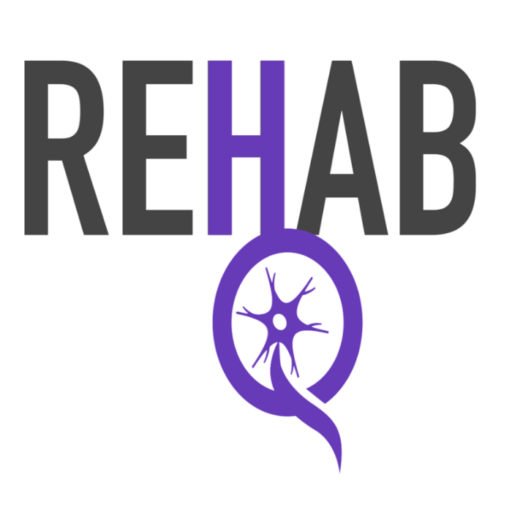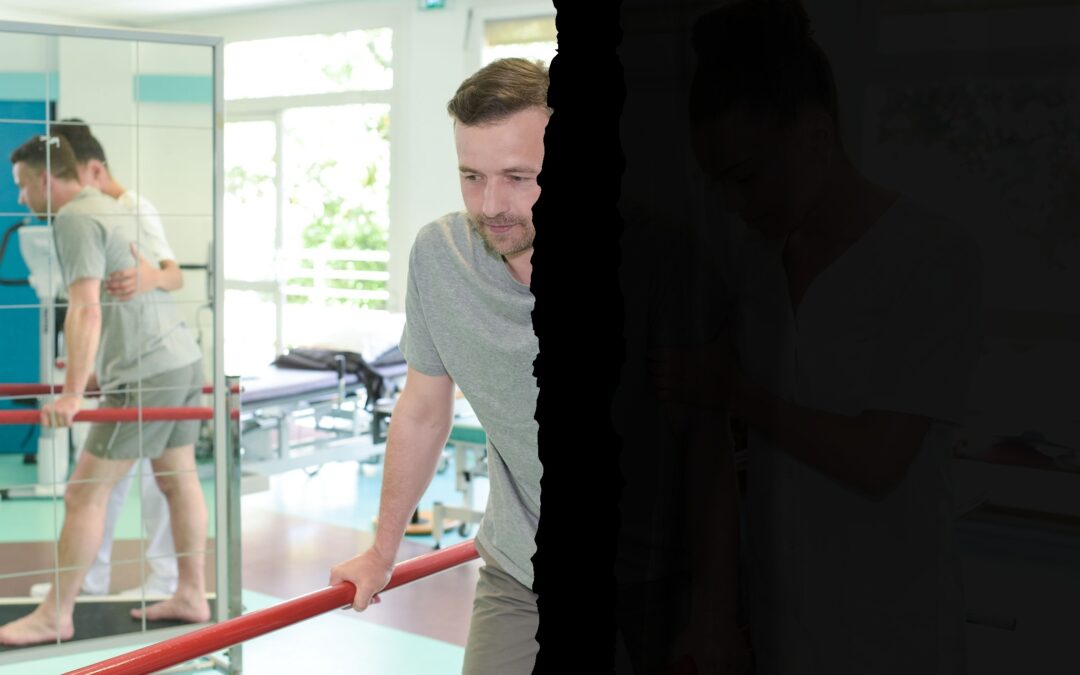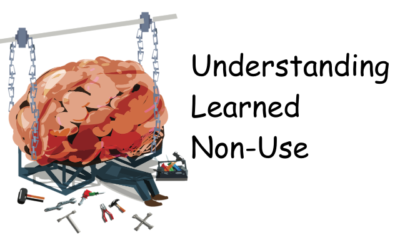hemineglect is a condition where someone loses the ability to attend to, sense, and/or perceive information on one side. This condition is also referred to as unilateral neglect, spatial neglect, and/or hemispatial neglect.

Several neurologic condition can cause this however, the most common condition that causes hemineglect is a stroke. Hemineglect primarily occurs when someone suffers a stroke on the right side of the brain. How common? Well, some data suggests that hemineglect occurs in approximately 82% of patient with right hemisphere stroke.
Someone who has hemineglect (due to right sided brain damage) will often not be aware of objects and/or people who are in their space on the left side.
The Anatomy of Hemineglect
Neglect has been associated with lesions in the posterior parietal lobe.

What are the symptoms of hemineglect?
- leaving food on the side of a plate opposite the side of the brain damage (despite not feeling full)
- if asked to draw a clock, they may place on the numbers on one side of the circle
- only put make up on the side of the same side as the brain damage
- only shave the side of the face on the same side as the brain damage
- bumping into objects that present themselves on the side opposite the side of the brain damage
- bumping into people who present themselves on the side opposite of the side of the brain that is damaged
- keeping the head oriented to the side opposite the side of the brain damage.


Additionally, people with hemineglect may not have any strength deficits in the involved arm however they fail to engage the arm in purposeful activities. Along those same lines, their vision may be intact however, they fail to recognize or acknowledge objects if presented in the space on the side opposite the side of the brain damage.
What is the treatment for hemineglect?
Medication
There is some evidence that suggests medication may help to improve this condition.
Non Pharmacologic Treatment
- Reorientation exercises – slowly bringing attention toward the neglected side
- Approach the patient from the neglected side
- If the patient watches TV, place the television on the neglected side
- Place food on the neglected side of the plate
- If the patient wears a watch, place the watch on the neglected arm
- Stay consistent with the strategies and provide frequent, yet empathetic, feedback to the patient to remind him or her to attend to the neglected side.
- Vibration – Neck muscle vibration on the neglected side provides sensory input in combination with other re-orientation exercises. This technique is not subject to habituation (getting used to the feeling and therefore not feeling it), and has shown to endure after the vibration terminates.
- Visual scanning training – encourage scanning toward the neglected side by covering up or blocking items in the visual field on the non-neglected side. For example, have the patient read a book and only read the pages on the neglected side.
- Prizm glasses – these are glasses that artificially shift the visual field toward the neglected side.
Other articles you may be interested in:
Understanding Learned Non-Use
https://youtu.be/iLo0j4aC44I Do you feel like you have plateaued? What I mean is, has your arm and leg movement recovery slowed to a crawl? Or maybe progress has stopped altogether? The common belief is that someone loses the ability to move because that part...
Discharged from therapy. What now?
So, you have been discharged from therapy. So, what now? For some, this is a positive step in the rehab process. Some will understand right away that this is progress. On the other hand, for others it can bring up all kinds of negative emotions. "Is my therapist mad...
Walking Exercises for Stroke Patients
Many people inquire about the "best exercises" for stroke patients to improve walking. I like to use the term "Drills" when referring to "stroke exercises". Why? Because "Drills" are what I think of when I think of repetitive movement. Case and point, drills are...
Post Stroke Pain: Diagnosis and Treatment
Pain is a common symptom after a stroke. Unfortunately, pain can be a significant barrier to regaining function. In some cases, there is an identifiable cause related to a movement or a structural problem. The rehab team can identify this, prescribe the...
Tips for effective physical therapy at home after a stroke
An effective physical therapy program at home after a stroke is the most critical component for a successful recovery. I dare say MORE important than face to face time with your therapists. As someone who earns a living by treating patients (in person), this is a...
Knee Hyperextension after a Stroke: Causes and Treatment
What is Knee Hyperextension after a Stroke? Knee hyperextension is a common problem after a stroke. Knee hyperextension is when the knee goes beyond a straight position. Yeah, not exactly natural looking or feeling. ? Knee hyperextension (recurvatum) usually happens...
Product Spotlight: Stroke Arm Exercise for Spasticity
Spasticity and abnormal movement patterns can make it difficult to perform stroke arm exercise. The Urias air splint can be an invaluable tool to minimize involuntary arm contractions, reduce pain, prevent contractures, and make it one thousand times easier to manage...
Best Method for Stretching Spastic Muscles
Stretching spastic muscles is critical after a stroke. Spasticity is a movement disorder that causes an involuntary muscle contraction in response to lengthening. This occurs if there has been damage to the brain or spinal cord. This can make movement retraining and...
Does Mirror Therapy Improve Arm Function?
Mirror therapy (MT) is one of several effective treatments used to regain arm movement after a stroke. Mirror Therapy Background MT was originally designed to treat phantom limb pain with amputees. The way it worked was that it gave the person the sensation that they...
Mental Practice Helps Movement Recovery after a Stroke
Mental practice is a way of relearning movement (motor functions) by creating an image in your mind of the body performing that movement without the body actually moving. This method of enhancing performance and/or improving a motor skill has been used for decades in...











